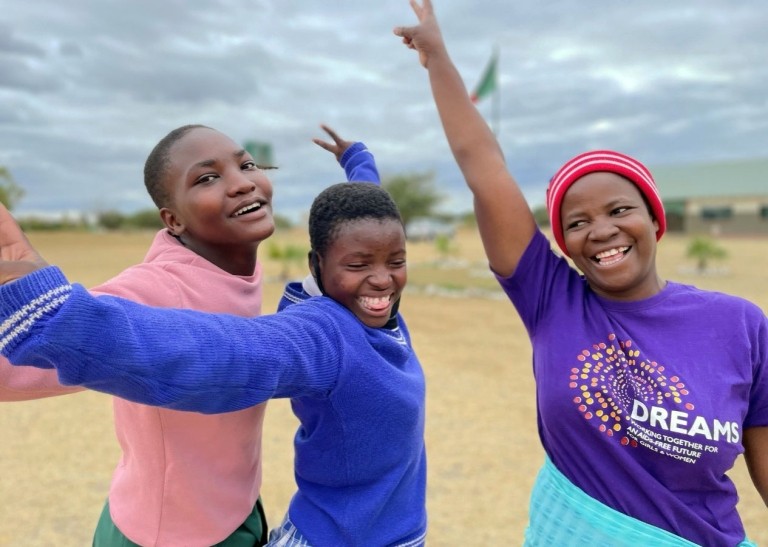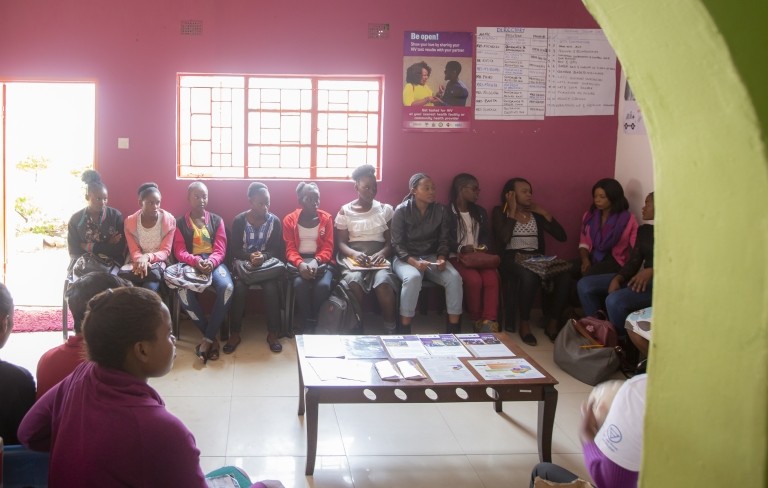Blog
Supporting girls and young women to reach their goals: Four reflections from DREAMS in Zambia

A young, single mother of two desperate to take control of her reproductive health. An adolescent girl struggling to find the confidence to stand up to older boys and men to stay HIV-free. A teenager grappling with depression and anxiety after experiencing gender-based violence.
The needs of these adolescent girls and young women (AGYW) were as diverse as their personal stories, and all of them were successfully served through DREAMS. From 2015 to 2022, Pact led the USAID-funded Zambia Community HIV Prevention Project (Z-CHPP), which aimed to accelerate progress toward Zambia’s goal of reducing new HIV infections by increasing the adoption of high-impact HIV services and protective behaviors. The project focused on priority populations, including AGYW, who are disproportionately affected by HIV/AIDS due to social, economic and biological factors, and who disproportionately represent new HIV infections.
DREAMS is a flagship PEPFAR program designed to empower AGYW to be Determined, Resilient, Empowered, AIDS-free, Mentored and Safe. The DREAMS component that Pact led under Z-CHPP was especially flexible and adaptable, leading to its success. In total, Z-CHPP’s DREAMS program enrolled more than 826,000 AGYW, putting participants together into Safe Space groups to develop knowledge and behaviors to reduce their risk of HIV infection and address drivers of AGYW vulnerability to HIV.
Beyond Safe Space groups, DREAMS AGYW were also able to easily access adolescent and youth friendly biomedical services through Z-CHPP’s DREAMS centers, such as PrEP to prevent HIV and family planning to prevent unwanted pregnancies. The project provided other services too, like mental health care to address depression, anxiety and trauma among AGYW, and educational interventions that encouraged AGYW to stay in school or return to the classroom. There were also economic strengthening activities to build AGYW’s financial literacy, business skills and employability to address the complex economic drivers of AGYW risk for HIV, unwanted pregnancies and violence. And to promote a protective and supportive home environment for AGYW, Z-CHPP implemented a positive parenting intervention for DREAMS adolescent girls and their caregivers. Together, these interventions enabled us to best serve the determined young women who came through our doors.
Z-CHPP’s DREAMS program enrolled more than 826,000 AGYW, putting participants together into Safe Space groups to develop knowledge and behaviors to reduce their risk of HIV infection and address drivers of vulnerability to HIV.

As Z-CHPP comes to a close, we have developed a compendium of best practices that is intended to support practitioners working with AGYW. Here are four overarching lessons we learned in seven years of DREAMS implementation:
Demand for services is high, and the vast majority of girls accessed secondary services. DREAMS activities consistently surpassed their programmatic targets around screening, enrollment and graduation. Positive word of mouth from participants and community acceptance of DREAMS programming attracted AGYW to enroll. Z-CHPP’s high retention rates for additional programming and enthusiasm from the girls underscore DREAMS’s relevance.
Continuing to decentralize service delivery could reduce barriers to accessing services. Some Safe Spaces are beginning to offer additional services, such as distributing oral contraceptives and PrEP, in addition to HIVST and condom distribution. This decentralization reduces logistical barriers to accessing services, but may not work for all Safe Spaces. For instance, consultations require privacy, and condom distribution is not allowed in schools. Future programs should consider implementing pilots to further understand how biomedical services can be decentralized to Safe Spaces.
Z-CHPP encouraged creativity and agility, resulting in successful innovations that addressed AGYW’s critical and unmet needs. Z-CHPP DREAMS staff were encouraged to analyze AGYW needs and propose ways to address identified gaps. With few exceptions, the innovations DREAMS staff created proved responsive to AGYW needs and effective in addressing them.
- Screening for mental health services revealed that most AGYW had symptoms of depression or anxiety. Results demonstrated that community-based mental health services effectively reduced stress and anxiety symptoms.
- The digital literacy course was popular and underscored the desire for AGYW to learn basic word processing, email communication and internet navigation skills.
- iSchool provided textbook content and additional tutoring on tablets for AGYW who lacked access to or wanted more time to engage with school materials.
- Uptake for HIV self-testing demonstrated its acceptability, especially among AGYW’s sexual partners.
Trusting and supportive collaborations allowed local experience and expertise to guide the program. The DREAMS staff invested time in observing AGYW behavior and soliciting feedback. For example, based on AGYW feedback, the program extended the Centers’ hours of operation so they were open on the weekends, when AGYW had free time. Z-CHPP also benefited from a supportive relationship with the United States Agency for International Development (USAID), whose staff encouraged the project to improve and innovate. In response, the Z-CHPP DREAMS team was willing and able to manage and provide additional services with the complexity and burden the additions entailed. As a result of these approaches, Z-CHPP’s DREAMS programming started with six services and doubled to 12 over the life of the project to meet AGYW expressed needs.
To learn more, download the Best Practices in Programming for Adolescent Girls and Young Women (AGYW): A Compendium of Interventions and Lessons Learned from the USAID Zambia Community HIV Prevention Project (Z-CHPP).